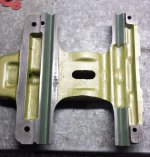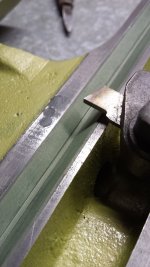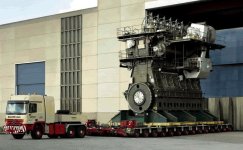Scraping
Scraping is old school and a skill in itself. Old machines had iron way systems that were not hardened. No hardened steel ways like my leblond. No flame hardened ways like my 10EE. Ways like you find on my old Myford ML7. Many old machines off eBay are done! I get one every once in a while knowing I bought a casting kit.
Hardened ways you grind. Old ways you scrape. I am working on an old south bend 9. What can I say I love lathes!!!!

it will be scraped and the other parts as appropriate either turcited or brass-ed. Then scraped to fit. I learned brassing from an old machine guy in England. I actually prefer it to turcite. Either way this toy will be tight as a vestal virgin and outlast my days I have left.
My HLV is ground tool steel. Can’t scrape that. My Wadkin PK table saw ways are cool. The sliding table has its own ways on which the bearings run. Wadkin was BAD ASS at green lane works! They attached hardened steel strips with special steel bolts. They break off at a certain torque. Then the whole thing was precision ground. If you shine a glancing light on the ways you can barely see the remains of the bolt circles. Hairline circles. Dead flat!
Hardinge did the same. The T 10 lathe had these type of ways as did the TM/UM mill. These will need to be ground if needed.
Oil pockets are not easy with grinding. The frosted appearance of scraping is just cool.
I have a beat up Oliver shaper. Table needs work from the YawWhos at Boeing. Originally it was ground. I might just send it to nortfield for planning. Planned tops on wood shapers are nice to work with.
So there you go…. Lots of info and no one right answer.


 it will be scraped and the other parts as appropriate either turcited or brass-ed. Then scraped to fit. I learned brassing from an old machine guy in England. I actually prefer it to turcite. Either way this toy will be tight as a vestal virgin and outlast my days I have left.
it will be scraped and the other parts as appropriate either turcited or brass-ed. Then scraped to fit. I learned brassing from an old machine guy in England. I actually prefer it to turcite. Either way this toy will be tight as a vestal virgin and outlast my days I have left.

